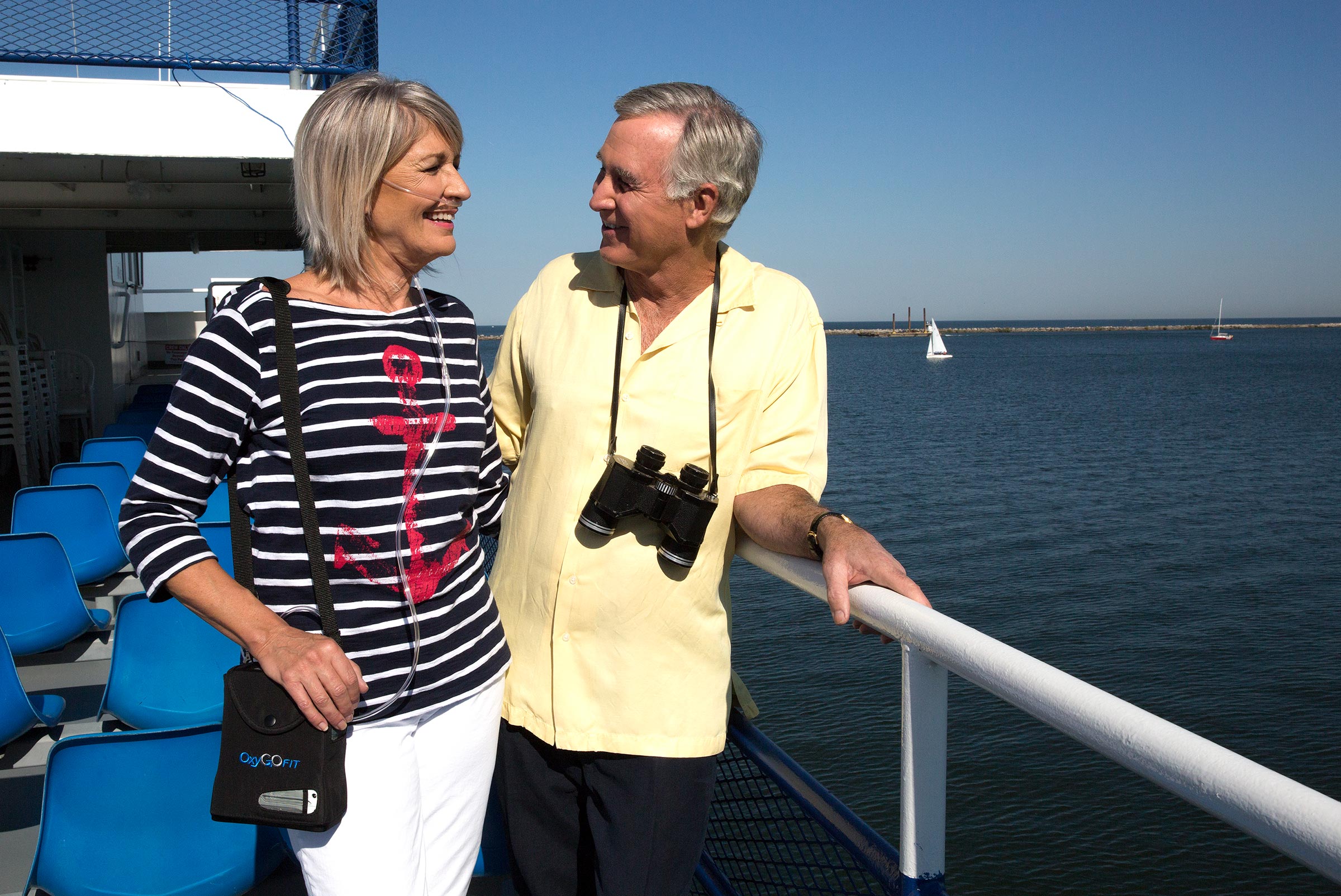When traveling with oxygen, there are some guidelines that you need to follow either due to regulations or simply for your own safety.
This article will focus on traveling in a car, bus, motor home, train or cruise ship.
Traveling with oxygen is something that is done every day by thousands of people. Some initial planning on your part will improve your chances that your trip will be enjoyable and without incident. Whether you are jumping in the family car, taking the bus, traveling the countryside via a motor home, riding a train or going to the Caribbean on a cruise ship, some research and planning in advance of your trip is needed to eliminate—or at least reduce—any surprises along the way.
What type of oxygen will you be taking with you? Will it be high pressure cylinders? Liquid oxygen? A stationary concentrator? A stationary concentrator with high pressure cylinders? A portable concentrator? A cylinder filling stationary concentrator?
If taking high pressure cylinders, how many do you need? Can you get them refilled while en route?
If using a liquid oxygen portable with a traveling liquid reservoir, secure the reservoir in the rear seat of the car using seat belts. Calculate how long your reservoir will last and plan your route so that you are driving near companies that can fill your reservoir. It is very wise to call each company before you begin your trip to confirm they can fill your reservoir and that they will be open on the day you expect to be there.
If taking a stationary concentrator, are you prepared to pick it up and place it in your trunk? Can you carry it up flights of stairs at a roadside motel?
If using a portable oxygen concentrator, can it be used during sleep, thus eliminating the need to lug a stationary concentrator on your trip? Can the portable concentrator accommodate up to 25 feet of tubing, including nasal cannula, giving you the ability to move about the motel room? Will the portable concentrator’s battery charge while driving? Finally, is the portable concentrator lightweight and quiet when operating?
Where are you going and how long will you be gone? Always give yourself more oxygen than you need—either for spending another day or two at a location you are enjoying or to give you extra time if you have vehicle problems.
Carry your oxygen script and letter of medical necessity with you always. Regardless of what oxygen system you are using, understand something: it’s mechanical, it can break down. Carrying your script with you will allow you a better chance of getting oxygen from a medical provider. (Expect to pay cash as this company cannot bill your insurance.)
Have your equipment supplier’s name and telephone number with you always. By law, your oxygen provider is only obligated to service you when you are in your home area. But maybe they can help you find a dealer near your location or ship something, like a portable concentrator, to you. Your homecare provider may also be able to help you with planning your trip finding companies that can fill your cylinders or liquid reservoir.
Let’s talk safety for a moment.
When you are on oxygen, there is to be no smoking near or around you (especially in a car). A window should be cracked open slightly to circulate the cabin air.
Do not come within six feet of a heat source when you are on your oxygen.
High pressure cylinders need to be secured always. Do not store your oxygen cylinders in the trunk of a car.
High pressure cylinders should never be standing upright unsecured. Secure cylinders either in a base or cylinder stand. Lay additional cylinders flat on their sides but not in a confined space (such a closet).
If traveling by motor home, make sure that any extra cylinders are securely stored in the undercarriage storage bins. If you have a stationary concentrator, make sure the casters are securely locked, or better yet, remove the casters so the concentrator has no chance of rolling about the motor home.
If traveling by bus, just call ahead as to what they require. Greyhound will let you take up to four E cylinders, two with you in your seating area and two to be stored securely in the luggage compartment.
If traveling by train, the same applies. Call the rail line and ask what they require. Most of these companies are willing to make accommodations to fit your needs. But it is important to call ahead of your trip to confirm what you can and cannot take.
Cruise lines are also willing to accommodate your needs but you still need to call well ahead of your trip. One cruise line, Norwegian, contracts with a medical equipment supply company, and you must use their equipment (wheelchairs, oxygen etc.). You are not permitted to use your own oxygen equipment, which may pose a problem for you. Always call ahead to check regardless of what mode of travel you are using.
Traveling with oxygen does not have to be a burden. It simply requires a little planning ahead to make sure that your trip is a safe and an enjoyable experience.
The creation of portable concentrators does make the planning process much easier. One portable concentrator, the OxyGo, meets and surpasses all criteria to make traveling with oxygen easy. It’s less than five pounds. Very quiet (39 decibels). Approved by the manufacturer to be used during sleep. No need to take a large stationary concentrator with you. The battery will charge while you are using the concentrator in the car. It is truly the only oxygen equipment you will need for your trip. Again, the name again is OxyGo. Ask your dealer for more information.
Safe travels!!




.png?width=767&name=COPD%20in%20the%20cold%20(2).png)









